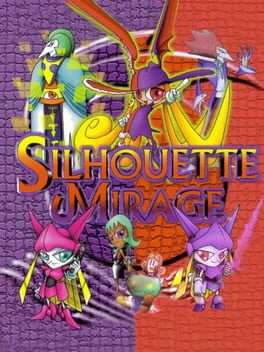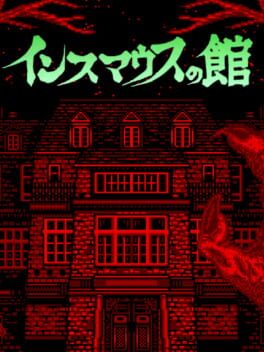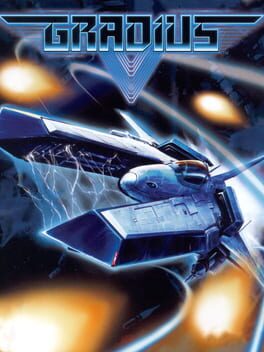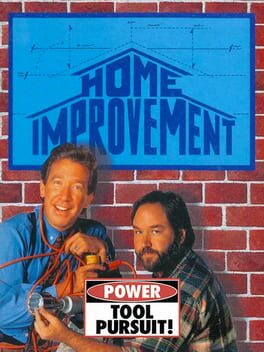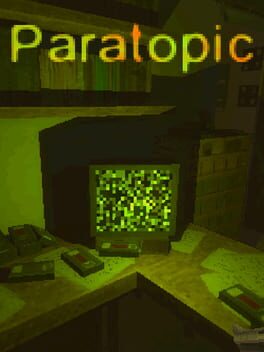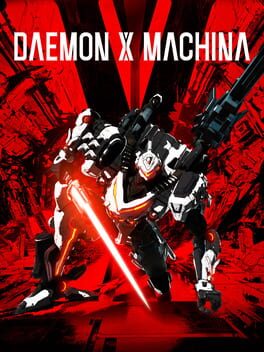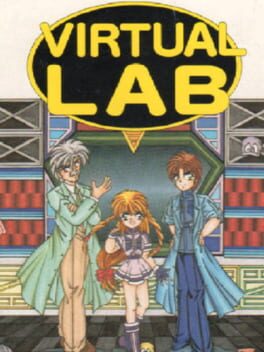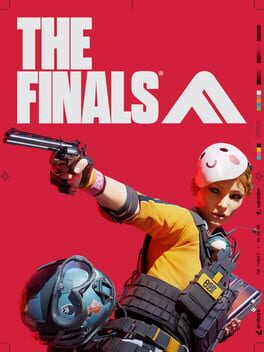vehemently
2024
I want to state my purpose here up front: I want to praise Slave Zero X because I think it’s the kind of game I’d like to see more of made. It’s a genuinely impressive package, but I also think there are a lot of glaring issues with the title that will make many people hate it. So let’s do a compliment sandwich and do some constructive criticism.
Slave Zero X is, if nothing else, oozing with style. The art is full with biopunk monstrosities and sexy twinks. The music is brimming with cyberpunk arpeggios, wailing guitars, and thumping breakbeat. The spritework is beautiful and intricate, and watching this game in motion (especially a skilled player) can be a thing of beauty. You can unlock special shaders, which I think is a fun touch. If nothing else. This is a small easter egg, but I also think it’s really cool that the levels in the Episode Enyo prequel are actually based on the 3D environments you move through in this game.
I also love the boldness of its narrative. It is unabashedly gay, for one, but I also think there is a deeper subtext of sex and gender here, of being at war with ones own body and seeking to reshape it. There is also an anarchist bent to its politics, which tie into Hegelian dialectics of power and rejects all authorities it can, be it government or gods. I don’t want to make it sound like it’s super highbrow. It’s all over the place. The lore bites range from some silly notes to eerie eschatological poetry. It’s very brash and loud. There’s a vulgarity to it, both in its satire and in its visuals, that feels like this hideous, pulsating mass of raw anger.
Okay, let’s change gears. Most people who say they like hard games are kind of lying, including me. What they mean is that they want games that are hard in specific ways. They want games that challenge them in familiar ways. I can’t tell you how many times I’ve seen people say, “I like hard games, but this is just unfun”; sometimes it’s coming from my own mouth. Games like Volgarr the Viking come to mind, unrelenting and unorthodox challenge boxes. Ugh, I’ll try to keep this short. The point is that “hardness” is a nebulous and subjective thing that is seen as something that we can mark objectively and quantitatively, even though the exact ways in which a game is hard or unfair depends on so many variables intersecting. I’m not making a novel point here, but that’s why some games get lauded for their difficulty and others are scorned.
I think that’s what Slave Zero X is. A game that is hard in ways people usually don’t want. That’s partially because of its ambition: it wants to be a fighting game and an action game in one. I think Slave Zero X wants to be Strider 2 but ends up being more like Ninja Warriors Return. And hey, that’s not a bad thing at all. What I mean is that combat in Slave Zero X, like in Ninja Warriors Return, tends to be very flat. You can launch and juggle people in the air, sure, but the majority of the game is forward movement. I really think the game could have done with a lot more verticality, but that also might have resulted in new issues. But it also ends up feeling a bit repetitive at times.
But if you run through this game mashing the light attack button, you will eventually hit a brick wall, and wonder why the game is punishing you. That’s partially because the game isn’t very good at communicating to you what’s going on. The tutorial is quite bad; it just throws a dozen pages of text explaining the mechanics at you once and then sets you loose. But it goes deeper than that, I think. For example, you have a parry that you execute by pressing a direction toward the attack, but since it has no animation and is in a very small window, it’s often not clear when or why you’re missing the mark with your timing. You get a score at the end of sections, but it's not super clear why you got a better or worse score, which should be one of the best ways to communicate to a player how they're doing. And while there’s a training room, all that really helps you with is comboing. And comboing does feel great here, it really does. But that’s also not the thing you need the most practice on in order to beat the game.
I think the key issue with Slave Zero X comes down to encounter design. One of the common action game design paradigms right now is a style that sees players progress through a series of arenas where enemies funnel in as you fight through them for some amount of time before eventually moving on. This is often paired with a combat system that produces self-sustaining feedback loops (recovering health or ammo, that is) that sort of dictates the flow of combat. As pointed out by one Campster, this kind of structure often lead to combat feeling pretty samey, as the pace of combat is entirely determined by the player and thus does not often get disrupted. But this trope has its place, and can be done well, but in order for it to be fun for long periods of time, you often need to be introducing new mechanics and enemies on a pretty frequent basis, which doesn’t really happen here.
Slave Zero X’s arenas end up feel awfully repetitive. New enemies aren’t introduced often, and you have to fight hundreds of them. The screen will often be filled with dozens of identical enemies for you to hack away through, which can be okay as fodder, I guess, but these masses can combo you, often for a long time. If you don’t have Burst up, you just have to lie back and take it for however long they juggle you. And getting combo’d is one of those classic things thats fun to do to an enemy but never for an enemy to do to you. It’s no coincidence that Slave Zero X is at it’s best when you’re fighting a small number of enemies rather than in its massive cavalcades of fodder.
A lot of the tougher enemies have attacks with insanely fast windups that lead into combos; even in a one-on-one fight I couldn’t really counter them consistently. They’re so fast that I think they may be literally impossible to parry reliably, and even if they’re not, they might as well be for most players. This is all exacerbated by the encounter design, which means that will all the enemies being thrown at you, it is often hard to tell what’s hitting you, let alone predict it and counter.
So when you’re not successfully juggling armored cops and parrying like the cyberninja you’re supposed to be, you’re often getting bodied and juggled in a way that makes you feel powerless. The result is a game that will frustrate most players. I’m not going to backseat game design and act like I know exactly how to fix it, though I definitely have ideas. But that is the reality: this is a game that’s hard in a way that many people will reject. It’s unfortunate, because I think with changes, it could be a much stronger and approachable game with a wider appeal.
But despite all these issues, I can’t say I think it’s a bad game. It’s a mess, yes, but it’s got so much style, so much ambition, and it’s combat does feel great when it works. During the right boss fight or the right set up of enemies, it feels like a dynamic flurry of blades, and you’ve somehow mastered it at the center of it all. While you’re not given a lot of opportunities for customization of your kit, your kit feels good to begin with. X-Shou feels sort of sticky and rigid in a way that is very novel, making in a distinctive feeling combat where a lot of your movement is done through attacks and dashes rather than running or walking. You juggle and bounce and parry and slash and gib fascists. It can be a blast.
Again, this is a game I want to see more games like. I want to see games that take inspiration from the arcade era, that are ambitious in their design, that go hogwild on their fiction, that inexplicably reboot forgotten titles as completely different games, that are gay and radical and flashy and deranged, that are extra in every way possible, that are like Slave Zero X is.
Slave Zero X is, if nothing else, oozing with style. The art is full with biopunk monstrosities and sexy twinks. The music is brimming with cyberpunk arpeggios, wailing guitars, and thumping breakbeat. The spritework is beautiful and intricate, and watching this game in motion (especially a skilled player) can be a thing of beauty. You can unlock special shaders, which I think is a fun touch. If nothing else. This is a small easter egg, but I also think it’s really cool that the levels in the Episode Enyo prequel are actually based on the 3D environments you move through in this game.
I also love the boldness of its narrative. It is unabashedly gay, for one, but I also think there is a deeper subtext of sex and gender here, of being at war with ones own body and seeking to reshape it. There is also an anarchist bent to its politics, which tie into Hegelian dialectics of power and rejects all authorities it can, be it government or gods. I don’t want to make it sound like it’s super highbrow. It’s all over the place. The lore bites range from some silly notes to eerie eschatological poetry. It’s very brash and loud. There’s a vulgarity to it, both in its satire and in its visuals, that feels like this hideous, pulsating mass of raw anger.
Okay, let’s change gears. Most people who say they like hard games are kind of lying, including me. What they mean is that they want games that are hard in specific ways. They want games that challenge them in familiar ways. I can’t tell you how many times I’ve seen people say, “I like hard games, but this is just unfun”; sometimes it’s coming from my own mouth. Games like Volgarr the Viking come to mind, unrelenting and unorthodox challenge boxes. Ugh, I’ll try to keep this short. The point is that “hardness” is a nebulous and subjective thing that is seen as something that we can mark objectively and quantitatively, even though the exact ways in which a game is hard or unfair depends on so many variables intersecting. I’m not making a novel point here, but that’s why some games get lauded for their difficulty and others are scorned.
I think that’s what Slave Zero X is. A game that is hard in ways people usually don’t want. That’s partially because of its ambition: it wants to be a fighting game and an action game in one. I think Slave Zero X wants to be Strider 2 but ends up being more like Ninja Warriors Return. And hey, that’s not a bad thing at all. What I mean is that combat in Slave Zero X, like in Ninja Warriors Return, tends to be very flat. You can launch and juggle people in the air, sure, but the majority of the game is forward movement. I really think the game could have done with a lot more verticality, but that also might have resulted in new issues. But it also ends up feeling a bit repetitive at times.
But if you run through this game mashing the light attack button, you will eventually hit a brick wall, and wonder why the game is punishing you. That’s partially because the game isn’t very good at communicating to you what’s going on. The tutorial is quite bad; it just throws a dozen pages of text explaining the mechanics at you once and then sets you loose. But it goes deeper than that, I think. For example, you have a parry that you execute by pressing a direction toward the attack, but since it has no animation and is in a very small window, it’s often not clear when or why you’re missing the mark with your timing. You get a score at the end of sections, but it's not super clear why you got a better or worse score, which should be one of the best ways to communicate to a player how they're doing. And while there’s a training room, all that really helps you with is comboing. And comboing does feel great here, it really does. But that’s also not the thing you need the most practice on in order to beat the game.
I think the key issue with Slave Zero X comes down to encounter design. One of the common action game design paradigms right now is a style that sees players progress through a series of arenas where enemies funnel in as you fight through them for some amount of time before eventually moving on. This is often paired with a combat system that produces self-sustaining feedback loops (recovering health or ammo, that is) that sort of dictates the flow of combat. As pointed out by one Campster, this kind of structure often lead to combat feeling pretty samey, as the pace of combat is entirely determined by the player and thus does not often get disrupted. But this trope has its place, and can be done well, but in order for it to be fun for long periods of time, you often need to be introducing new mechanics and enemies on a pretty frequent basis, which doesn’t really happen here.
Slave Zero X’s arenas end up feel awfully repetitive. New enemies aren’t introduced often, and you have to fight hundreds of them. The screen will often be filled with dozens of identical enemies for you to hack away through, which can be okay as fodder, I guess, but these masses can combo you, often for a long time. If you don’t have Burst up, you just have to lie back and take it for however long they juggle you. And getting combo’d is one of those classic things thats fun to do to an enemy but never for an enemy to do to you. It’s no coincidence that Slave Zero X is at it’s best when you’re fighting a small number of enemies rather than in its massive cavalcades of fodder.
A lot of the tougher enemies have attacks with insanely fast windups that lead into combos; even in a one-on-one fight I couldn’t really counter them consistently. They’re so fast that I think they may be literally impossible to parry reliably, and even if they’re not, they might as well be for most players. This is all exacerbated by the encounter design, which means that will all the enemies being thrown at you, it is often hard to tell what’s hitting you, let alone predict it and counter.
So when you’re not successfully juggling armored cops and parrying like the cyberninja you’re supposed to be, you’re often getting bodied and juggled in a way that makes you feel powerless. The result is a game that will frustrate most players. I’m not going to backseat game design and act like I know exactly how to fix it, though I definitely have ideas. But that is the reality: this is a game that’s hard in a way that many people will reject. It’s unfortunate, because I think with changes, it could be a much stronger and approachable game with a wider appeal.
But despite all these issues, I can’t say I think it’s a bad game. It’s a mess, yes, but it’s got so much style, so much ambition, and it’s combat does feel great when it works. During the right boss fight or the right set up of enemies, it feels like a dynamic flurry of blades, and you’ve somehow mastered it at the center of it all. While you’re not given a lot of opportunities for customization of your kit, your kit feels good to begin with. X-Shou feels sort of sticky and rigid in a way that is very novel, making in a distinctive feeling combat where a lot of your movement is done through attacks and dashes rather than running or walking. You juggle and bounce and parry and slash and gib fascists. It can be a blast.
Again, this is a game I want to see more games like. I want to see games that take inspiration from the arcade era, that are ambitious in their design, that go hogwild on their fiction, that inexplicably reboot forgotten titles as completely different games, that are gay and radical and flashy and deranged, that are extra in every way possible, that are like Slave Zero X is.
2022
"My objective was solely archaeological. I would hunt these gray forms until they would transmit to me a part of their mystery, a part of the secret few phrases could sum up: why would these extraordinary constructions, compared to the seaside villas, not be perceived or even recognized? Why this analogy between the funeral archetype and military architecture? Why this insane situation looking out over the ocean? This waiting before the infinite oceanic expanse?...
...Why speak of "brutalism"? And, above all, why this ordinary habitat, so very ordinary over so many years?
These heavy gray masses with sad angles and no openings - excepting the air inlets and several staggered entrances - brought to light much better than many manifestos the urban and architectural redundancies of the postwar period that had just reconstructed to a tee the destroyed cities. The antiaircraft blockhouses pointed up another lifestyle, a rupture in the apprehension of the real. The blue sky had once been heavy with the menace of rumbling bombers, spangled too with the deafening explosions of artillery fire. This immediate comparison between the urban habitat and the shelter, between the ordinary apartment building and the abandoned bunker in the heart of the pores through which I was traveling, was as strong as a confrontation, a collage of two dissimilar realities. The antiaircraft shelters spoke to me of men's anguish and the dwellings of the normative systems that constantly reproduce the city, the cities, the urbanistic.
The blockhouses were anthropomorphic; their figures recalled those of bodies. The residential units were but arbitrary repetitions of a model, a single, identical, orthogonal, parallelepipedal model. The casemate, so easily hidden in the hollow of the coastal countryside, was scandalous here, and its naturalness was due less to the originality of its silhouette than to the extreme triviality of the surrounding architectural forms. The curved profile brought with it into the harbor's quarters a trace of the curves of dunes and nearby hills, and there, in this naturalness, was the scandal of the bunker...
...Slowed down in his physical activity but attentive, anxious over the catastrophic probabilities of his environment, the visitor in this perilous place is beset with a singular heaviness; in fact he is already in the grips of that cadaveric rigidity from which the shelter was designed to protect him. "
- Paul Virilio, Bunker Archaeology
...Why speak of "brutalism"? And, above all, why this ordinary habitat, so very ordinary over so many years?
These heavy gray masses with sad angles and no openings - excepting the air inlets and several staggered entrances - brought to light much better than many manifestos the urban and architectural redundancies of the postwar period that had just reconstructed to a tee the destroyed cities. The antiaircraft blockhouses pointed up another lifestyle, a rupture in the apprehension of the real. The blue sky had once been heavy with the menace of rumbling bombers, spangled too with the deafening explosions of artillery fire. This immediate comparison between the urban habitat and the shelter, between the ordinary apartment building and the abandoned bunker in the heart of the pores through which I was traveling, was as strong as a confrontation, a collage of two dissimilar realities. The antiaircraft shelters spoke to me of men's anguish and the dwellings of the normative systems that constantly reproduce the city, the cities, the urbanistic.
The blockhouses were anthropomorphic; their figures recalled those of bodies. The residential units were but arbitrary repetitions of a model, a single, identical, orthogonal, parallelepipedal model. The casemate, so easily hidden in the hollow of the coastal countryside, was scandalous here, and its naturalness was due less to the originality of its silhouette than to the extreme triviality of the surrounding architectural forms. The curved profile brought with it into the harbor's quarters a trace of the curves of dunes and nearby hills, and there, in this naturalness, was the scandal of the bunker...
...Slowed down in his physical activity but attentive, anxious over the catastrophic probabilities of his environment, the visitor in this perilous place is beset with a singular heaviness; in fact he is already in the grips of that cadaveric rigidity from which the shelter was designed to protect him. "
- Paul Virilio, Bunker Archaeology
1997
1995
Survival Horror, as a genre, often feels hard to pin down due to its particular origins in adventure games. The prototype tends to be one of attrition and riddles, a game about navigating a maze of monsters while solving puzzles and unlocking doors. But what if you reduced that down, boiled it down like syrup into its absolute most basic form? I think different people will have different ideas of what that syrup would taste like. But it might taste something like Innsmouth no Yakata (Mansion of Innsmouth).
The game consists of running around corridors, searching for keys and map orbs, and shooting Lovecraftian beasties that get in your way. Your ammunition is limited, so you also scour for bullets, as well as health pick-ups. It's almost like a dungeon crawl. But here's the kicker: there's a time limit. A short one, too! You never get more than like, 3 minutes to complete a level. Unlike most Survival Horror, which are slow trudges through corridors of dread, playing through Innsmouth no Yakata is a frantic, desperate sprint through a haunted house.
In a way, Innsmouth no Yakata is almost a precursor to the cult classic Killer7, Grasshopper's own radical reinterpretation of Survival Horror. It's a unique experience, and I'm curious what it would feel like in the Virtual Boy headset.
Now, does all this singularity make Innsmouth no Yakata a good game? Not really. It's too barebones and too repetitive to be much more than an a diversion. And I bet there are other games that have figured this style out better. But it's an interesting piece within the lineage of Survival Horror, showcasing a unique take on just what this genre can be capable of doing, all while draped in that eerie VB red monochrome.
The game consists of running around corridors, searching for keys and map orbs, and shooting Lovecraftian beasties that get in your way. Your ammunition is limited, so you also scour for bullets, as well as health pick-ups. It's almost like a dungeon crawl. But here's the kicker: there's a time limit. A short one, too! You never get more than like, 3 minutes to complete a level. Unlike most Survival Horror, which are slow trudges through corridors of dread, playing through Innsmouth no Yakata is a frantic, desperate sprint through a haunted house.
In a way, Innsmouth no Yakata is almost a precursor to the cult classic Killer7, Grasshopper's own radical reinterpretation of Survival Horror. It's a unique experience, and I'm curious what it would feel like in the Virtual Boy headset.
Now, does all this singularity make Innsmouth no Yakata a good game? Not really. It's too barebones and too repetitive to be much more than an a diversion. And I bet there are other games that have figured this style out better. But it's an interesting piece within the lineage of Survival Horror, showcasing a unique take on just what this genre can be capable of doing, all while draped in that eerie VB red monochrome.
2022
Minor spoilers ahead? But probably worth knowing?:
Hey, game designers! If you're going to do a fakeout ending, please signpost it in literally any way! This game signified absolutely in no way that its fake ending was actually fake. Myself and at least 3 other people I've talked to about it fell for it. The credits played in full and I literally uninstalled the game after it because I straight up thought it was over. I only found out that I hadn't actually finished the game because I tried looking up alternate endings and everything was completely foreign! Please just tell me in any clear way that I'm not done please?
Hey, game designers! If you're going to do a fakeout ending, please signpost it in literally any way! This game signified absolutely in no way that its fake ending was actually fake. Myself and at least 3 other people I've talked to about it fell for it. The credits played in full and I literally uninstalled the game after it because I straight up thought it was over. I only found out that I hadn't actually finished the game because I tried looking up alternate endings and everything was completely foreign! Please just tell me in any clear way that I'm not done please?
1986
2005
Chibi-Robo has been a part of my life well before I ever played it. It's a game I had always known about, always wanted to play, always wanted to explore, ever since I heard about it. I never ended up buying it, but I fantasized about what kind of game it would be, and it just wriggled into the back of my brain.
It never could have lived up to those expectations from a time when games appeared to be endless wells of mystery and wonder and possibility. But now, with the understanding that it was part of the Love-de-lic lineage, I returned and finally played it. And even with all that, I was still surprised and delighted by so much of what Chibi-Robo had to offer. It's a game about being a little robot who cleans, but it's also a game about debt, divorce, and the energy crisis. Whodda thought!?
It never could have lived up to those expectations from a time when games appeared to be endless wells of mystery and wonder and possibility. But now, with the understanding that it was part of the Love-de-lic lineage, I returned and finally played it. And even with all that, I was still surprised and delighted by so much of what Chibi-Robo had to offer. It's a game about being a little robot who cleans, but it's also a game about debt, divorce, and the energy crisis. Whodda thought!?
2004
Permit me a formalist critique: Gradius as a series starts making more sense when you realize it’s a game where you can have up to seven hit points. That’s at least when it started making sense to me, and it started finally clicking here at Gradius V. You start to realize that collecting those capsules is less like grabbing power ups and more like discrete meter management. Many games give you bombs as a last resort, but Gradius gives you something a lot more dynamic. Upon collecting enough to unlock a force field, which absorbs three hits, you can collect a few more and hover your meter over the force field slot, and then activate it again when you lose your shield, thus giving you a grand total of 7 hits before you need to collect more capsules. The result of this, when it works, is this beautiful little tension of trying to evade enough bullets until you can manage to fill your meter. It’s wonderfully tense.
Gradius has always had this cool little power up system, and it’s evolved and changed a lot over the years. You can opt for different configurations and weapons, and even replace that force field with other things, like shrinking or a bomb. Powering up is a series of choices. Now, there are some issues with this design. When you eventually die (which will almost certainly happen), you lose all your power ups (though here you can recollect your allied options) and start at square one. This can lead to a pretty immediate spiral of repeated deaths, and can be really frustrating. But even if it didn’t it would still commit the cardinal action game sin of punishing players with a bad time. You move so slow at the start and it really just feels bad until you get a few speed upgrades. Those choices can feel less like exciting crossroads and more like burdensome obligations. This also has the issue of severely punishing players who are struggling, resulting in a feedback loop of demises. And with a game as difficult as this, that’s going to push people away.
Gradius as a series has also always had this strange penchant for unpredictable and chaotic level design, as well as claustrophobic spaces, and this is definitely the case with Gradius V. This is not really in vogue for modern shmup design. I think modern shmups tend to lean towards a ballet of evasion. Gradius has a bit of that, but it also has these wacky maze elements of navigating corridors. It feels very old school, but I don’t think this is a bad thing. In fact, there are a few moments here where I think it works beautifully. (There’s this weird walker boss near the end of the game that I think is genuinely sublime.) The options function as a way of extending your attack range without endangering your ship, and their different configurations provide different ways doing so with very different advantages. Something is working here. At the same time, there are some moments in Gradius V where I felt like the game expected me to be psychic. While these obstacles can require snappy responses, some obstacles are just too unpredictable to feel fair. Weirder still, the game often feels like it expects you to memorize its levels due to obstacles that are unavoidable if you don’t know when and where they’re going to appear. It’s a weird combo that doesn’t always work. But sometimes it works. Sometimes scraping through its challenges is as thrilling as it is frantic. And that power up system, and the 7 hit points, enable these levels to feel like gauntlets. I just wish there were less moments where failure felt inevitable.
I’ve always liked Gradius and Parodius, but I’ve never really been sure why. I could never beat the first level of the first game (those volcanoes suck!) and the theming is generally pretty dull (well, not Parodius). It might just be a nostalgia for having played some of them in junior high. Who could say? But now, coming back to them and addressing them critically, there is a unique approach to shmupcraft here. When these games work, they can be exciting and tense, not in spite of their corridors and chaotic obstacles, but because of them, as they work in tandem with the upgrade system that defined Gradius from the get-go. If only it were easier to slip into those moments.
Gradius has always had this cool little power up system, and it’s evolved and changed a lot over the years. You can opt for different configurations and weapons, and even replace that force field with other things, like shrinking or a bomb. Powering up is a series of choices. Now, there are some issues with this design. When you eventually die (which will almost certainly happen), you lose all your power ups (though here you can recollect your allied options) and start at square one. This can lead to a pretty immediate spiral of repeated deaths, and can be really frustrating. But even if it didn’t it would still commit the cardinal action game sin of punishing players with a bad time. You move so slow at the start and it really just feels bad until you get a few speed upgrades. Those choices can feel less like exciting crossroads and more like burdensome obligations. This also has the issue of severely punishing players who are struggling, resulting in a feedback loop of demises. And with a game as difficult as this, that’s going to push people away.
Gradius as a series has also always had this strange penchant for unpredictable and chaotic level design, as well as claustrophobic spaces, and this is definitely the case with Gradius V. This is not really in vogue for modern shmup design. I think modern shmups tend to lean towards a ballet of evasion. Gradius has a bit of that, but it also has these wacky maze elements of navigating corridors. It feels very old school, but I don’t think this is a bad thing. In fact, there are a few moments here where I think it works beautifully. (There’s this weird walker boss near the end of the game that I think is genuinely sublime.) The options function as a way of extending your attack range without endangering your ship, and their different configurations provide different ways doing so with very different advantages. Something is working here. At the same time, there are some moments in Gradius V where I felt like the game expected me to be psychic. While these obstacles can require snappy responses, some obstacles are just too unpredictable to feel fair. Weirder still, the game often feels like it expects you to memorize its levels due to obstacles that are unavoidable if you don’t know when and where they’re going to appear. It’s a weird combo that doesn’t always work. But sometimes it works. Sometimes scraping through its challenges is as thrilling as it is frantic. And that power up system, and the 7 hit points, enable these levels to feel like gauntlets. I just wish there were less moments where failure felt inevitable.
I’ve always liked Gradius and Parodius, but I’ve never really been sure why. I could never beat the first level of the first game (those volcanoes suck!) and the theming is generally pretty dull (well, not Parodius). It might just be a nostalgia for having played some of them in junior high. Who could say? But now, coming back to them and addressing them critically, there is a unique approach to shmupcraft here. When these games work, they can be exciting and tense, not in spite of their corridors and chaotic obstacles, but because of them, as they work in tandem with the upgrade system that defined Gradius from the get-go. If only it were easier to slip into those moments.
2018
2019
1987
2023
There is something vaguely unsatisfying with how few risks Lies of P takes. I unquestionably enjoyed it, and it’s a good video game, but something was missing. The idea of making a full-length action RPG based on The Adventures of Pinocchio is an extremely bizarre pitch, and they really went and made the damn thing, but it sort of feels like, by the end, it really didn’t have to be a Pinnochio game. I think it’s gone forgotten that Pinocchio is a pretty strange and paternalist story. Modern retellings often leave out the murder of the cricket, the death of Lampwick, and the constant didactic morals. While Lies of P embraces a lot of the weirdness, it also ends up telling a pretty trite story, and a pretty rote Soulslike.
The folkloric premise of a living puppet is remade into another steampunk fantasy setting with plagues ravaging 19th-century cityscapes. Plenty of old friends are here, the turquoise fairy, the fox and the cat, and of course, Gepetto, the father figure. Arlecchino of commedia dell’arte also make an apperance. There might be other references but I can’t remember them or don’t know them. And that’s all good fun. The set-up is this: The puppets (robots) fueled by ergo (magic electricity) have somehow broken the Grand Covenant (Three Laws of Robotics) and attacked their masters in Krat (Paris), a city ravaged by Petrification Disease (plague). Y’know it really… ends up reminding me of Atomic Heart in a lot of ways, which isn’t a good thing. It’s a steampunk-y game aping another series very clearly with a plot about automation powered by magic science in a city gone to hell with a chatty sidekick and shephereded by a mysterious father figure. Though maybe that’s unfair; Lies of P is way, way better than Atomic Heart.
Now, to be fair, the game does take some wild swings (including a post-game tease that I cackled in delight at) and does engage in some interesting commentary on the source material. The cute irony of the plague’s symptoms is not lost on me and I apprecaite it. Some of the sidequests (like Arlecchino, or this one married gentleman, or an unfortunate soul found locked in a tower) have a flare of something more exciting. The paternalism present in the source material is subverted somewhat predictably but also sneaks in a religious metaphor, I think even a sort of sacreligious Christ metaphor; I’m reminded of Žižek’s comments on how, on the cross, Jesus had himself lost faith in God. I’m sure you could come up with an interesting perspective on the morality stuff going on here, but it never quite feels all together. At one point, a character tells you that lies are weapons humans use, and you would be wise to do the same. It’s one of the best lines in the game. But lying in Lies of P never seems to cut into anything, never reveals anything about its subject or its world.
And listen, I don’t think it’s fair to force this game to stand up against Bloodborne, or other games that is clearly pulling from. But at the same time it is begging you to. So many design choices seem to come from the fact that “well, those games had it!” Why does this game have gestures? I have no clue. But largely it pulls this off pretty well. The game feels good, the level design is precise, and I think the idea of mix-matching weapon parts pretty cool. My only major complaint is that some of the bosses feel a bit spongey, but maybe my build just sucked.
But I think the precision of design actually ends up being part of its downfall. All the builds and upgrades can be balanced just so. There’s always a shortcut when you need there to be. Every level is not only linear but choreographed; I can’t think of many points in the game where I felt like I was exploring. Instead, you are expertly led down the path from obstacle to obstacle, level to level, boss to boss. Make no mistake: this is good design, but it also lacks texture. Every room seems to have a directionality, and so the purpose of the space is a known quantity: go forward. The game needs more friction, more imbalance, more roughness to give me something to grip. Or maybe I’m full of shit.
Despite my smugness I do think Lies of P is a good game. But it needs more texture. All the mechanical friction that made its inspirations so memorable is sanded away. It contorts its source material into something edgy but without anything to slice. It’s a good game, but it feels too slick. The heart that beats under Lies of P runs like clockwork. It is mechanical, precise, reliable. But there’s not enough blood pumping through it. Maybe if they can find a rougher edge, maybe then the next Pinnochio will grow up to be a real game.
The folkloric premise of a living puppet is remade into another steampunk fantasy setting with plagues ravaging 19th-century cityscapes. Plenty of old friends are here, the turquoise fairy, the fox and the cat, and of course, Gepetto, the father figure. Arlecchino of commedia dell’arte also make an apperance. There might be other references but I can’t remember them or don’t know them. And that’s all good fun. The set-up is this: The puppets (robots) fueled by ergo (magic electricity) have somehow broken the Grand Covenant (Three Laws of Robotics) and attacked their masters in Krat (Paris), a city ravaged by Petrification Disease (plague). Y’know it really… ends up reminding me of Atomic Heart in a lot of ways, which isn’t a good thing. It’s a steampunk-y game aping another series very clearly with a plot about automation powered by magic science in a city gone to hell with a chatty sidekick and shephereded by a mysterious father figure. Though maybe that’s unfair; Lies of P is way, way better than Atomic Heart.
Now, to be fair, the game does take some wild swings (including a post-game tease that I cackled in delight at) and does engage in some interesting commentary on the source material. The cute irony of the plague’s symptoms is not lost on me and I apprecaite it. Some of the sidequests (like Arlecchino, or this one married gentleman, or an unfortunate soul found locked in a tower) have a flare of something more exciting. The paternalism present in the source material is subverted somewhat predictably but also sneaks in a religious metaphor, I think even a sort of sacreligious Christ metaphor; I’m reminded of Žižek’s comments on how, on the cross, Jesus had himself lost faith in God. I’m sure you could come up with an interesting perspective on the morality stuff going on here, but it never quite feels all together. At one point, a character tells you that lies are weapons humans use, and you would be wise to do the same. It’s one of the best lines in the game. But lying in Lies of P never seems to cut into anything, never reveals anything about its subject or its world.
And listen, I don’t think it’s fair to force this game to stand up against Bloodborne, or other games that is clearly pulling from. But at the same time it is begging you to. So many design choices seem to come from the fact that “well, those games had it!” Why does this game have gestures? I have no clue. But largely it pulls this off pretty well. The game feels good, the level design is precise, and I think the idea of mix-matching weapon parts pretty cool. My only major complaint is that some of the bosses feel a bit spongey, but maybe my build just sucked.
But I think the precision of design actually ends up being part of its downfall. All the builds and upgrades can be balanced just so. There’s always a shortcut when you need there to be. Every level is not only linear but choreographed; I can’t think of many points in the game where I felt like I was exploring. Instead, you are expertly led down the path from obstacle to obstacle, level to level, boss to boss. Make no mistake: this is good design, but it also lacks texture. Every room seems to have a directionality, and so the purpose of the space is a known quantity: go forward. The game needs more friction, more imbalance, more roughness to give me something to grip. Or maybe I’m full of shit.
Despite my smugness I do think Lies of P is a good game. But it needs more texture. All the mechanical friction that made its inspirations so memorable is sanded away. It contorts its source material into something edgy but without anything to slice. It’s a good game, but it feels too slick. The heart that beats under Lies of P runs like clockwork. It is mechanical, precise, reliable. But there’s not enough blood pumping through it. Maybe if they can find a rougher edge, maybe then the next Pinnochio will grow up to be a real game.
1995
2023


